#5th century mosaic
Text

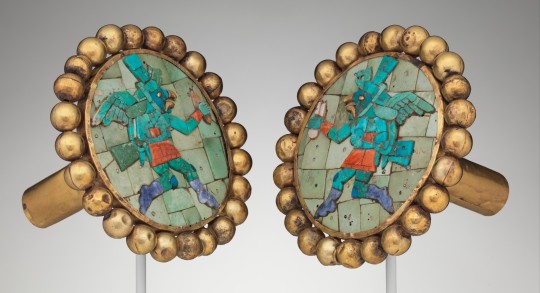
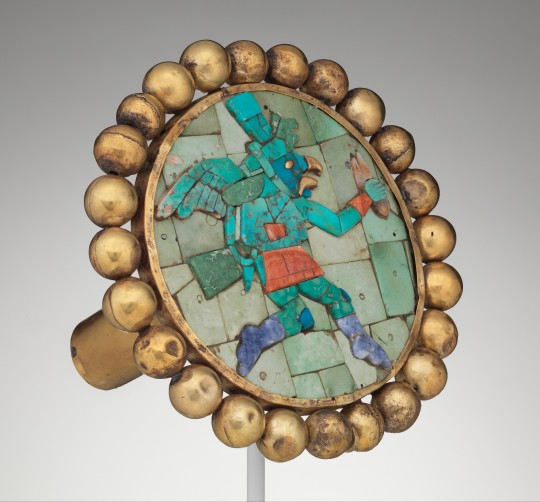
~ Ear Ornament, Winged Runner.
Date: A.D. 400–700
Place of origin: : Perú, North Coast
Culture: Moche
Medium: Gold, turquoise, sodalite, shell.
#ancient#ancient art#history#museum#archeology#ancient history#archaeology#5th century#8th century#jewelry#ear Ornament#winged runner#perú#peruvian#moche#mosaic#gold#turquoise#shell#a.d. 400#a.d. 700
879 notes
·
View notes
Text
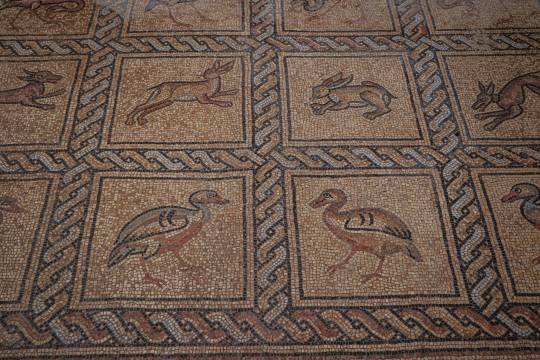



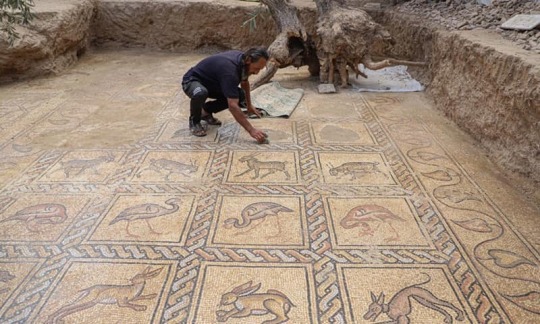
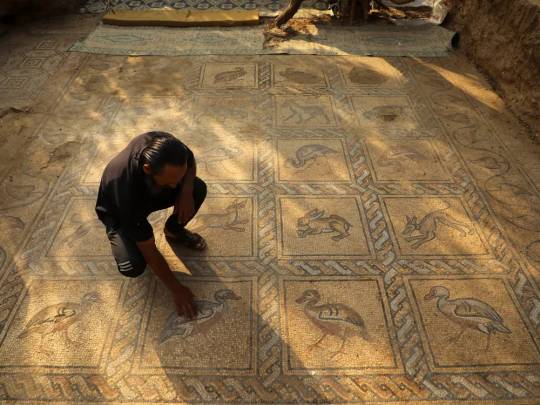
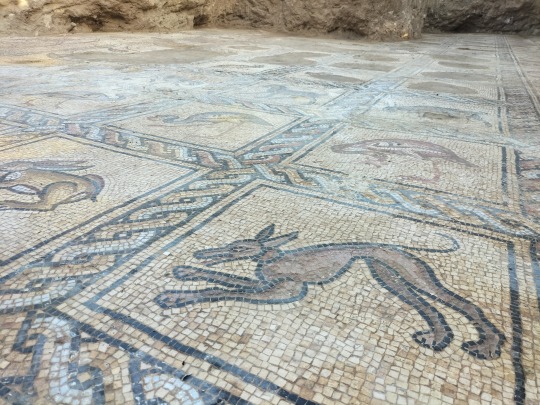
Byzantine Mosaic, Bureij refugee camp, Gaza Strip, Palestine,
5th to 7th centuries AD,
Salman al-Nabahin, a Palestinian farmer, unearthed the mosaic pavement, thought to date from the fifth to the seventh century AD, while working in his olive orchard in Bureij refugee camp, about half a mile from the border with Israel.
Trying to understand why some trees had not properly taken root, Nabahin said he and his son began digging. Then the son’s axe hit something hard and unfamiliar in appearance.
The Palestinian ministry of tourism and antiquities said the mosaic included several panels depicting animals and other features of social life during the Byzantine era, the continuation of the Roman empire in eastern provinces from the fifth century.
Gaza is rich in antiquities, having been an important trading spot for civilisations dating as far back as the ancient Egyptians and the Philistines depicted in the Bible, to the Roman empire and the Crusades from the 11th to the 13th centuries.
Several discoveries have been made in recent years. Due to a lack of funds and expertise, Gaza has usually invited international groups to help with the process of excavation and preservation.
#art#history#design#style#archeology#palestine#mosaic#gaza#gaza strip#5th century#7th century#refugee camp#byzantine#human history#free palestine#bureij#animals
102 notes
·
View notes
Text
For #WorldCamelDay:

Mosaic Fragment with Grazing Camel
Byzantine; Eastern Mediterranean, probably Syria, 5th century
Stone in mortar, 143 × 166.5 × 6.5 cm (56 1/4 × 61 1/2 × 2 1/2 in.)
On display at Art Institute of Chicago
“This image of a grazing camel probably came from a larger composition with other animals that decorated the floor of a semipublic space within a private home, such as a reception or dining room. This animal is represented against a white ground decorated with florets. A bell hangs from the camel’s neck as it reaches toward an object, perhaps a vessel filled with water, at the lower right. The knobby contours of the camel’s body are accentuated by areas of shading in subtly modulated colors, including black, brown, brick red, and olive green.”
info via https://www.artic.edu/artworks/35355/mosaic-fragment-with-grazing-camel
#camel#ancient art#Byzantine art#5th century art#Art Institute of Chicago#museum visit#mosaic#World Camel Day#animal holiday#animals in art#Near Eastern art
61 notes
·
View notes
Photo
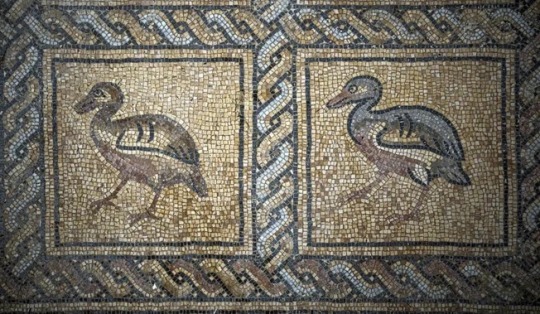
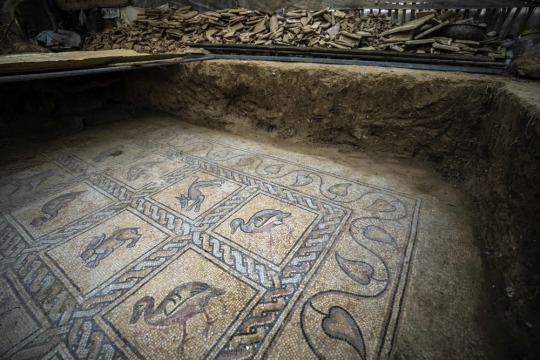
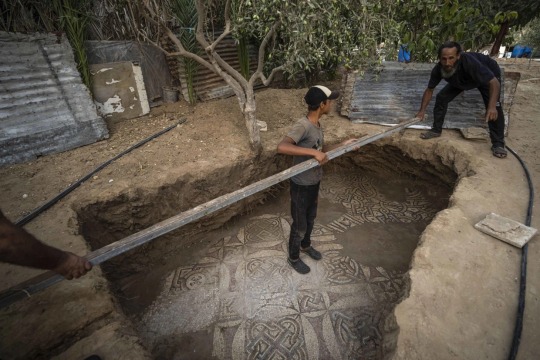





Palestinian Farmer Discovers a Rare Byzantine Mosaic in Gaza
The mosaic, dating from between the 5th-7th centuries AD, was discovered by a local farmer whilst planting an olive tree. The significant discovery raises questions about the status of preservation efforts inside the besieged Palestinian enclave.
The Ministry of Tourism and Antiquities in the Gaza Strip announced on Friday "a major archeological finding"—the discovery of a stunning Byzantine mosaic. Hamas says it will issue an official statement providing additional details in the next few days.
The mosaic floor, dating from between the 5th-7th centuries, was discovered a few months ago inside the Bureij refugee camp in central Gaza, approximately 1km from the Israeli border.
Earlier today, the Associated Press shared photos of the site and reported that a local farmer uncovered the mosaic whilst planting an olive tree, when his spade hit a hard surface. The farmer and his son started digging. Three months later, they uncovered the mosaic.
Archeologists claim that this is one of the most significant findings ever discovered in the Gaza Strip. "These are the most stunning mosaic floors ever discovered in Gaza, in terms of the richness of the graphic representation and the complexity of the geometric layout. We have never seen a mosaic boasting such rich colors in Gaza before", says Rene Elter from the French School of Biblical and Archeological research in Jerusalem.
According to the photos, the mosaic features animal depictions, and appears to be well-preserved. A little damage is visible in some areas, caused by roots of olive trees planted at the site in previous years. The farmer who dug up the mosaic covered it with a large sheet and refuses to be identified before the official unveiling. In a chat with the Associated Press, he expressed his hope for some financial reward for his discovery.
The discovery of this archeological treasure brings to the fore the difficult and complex status of cultural heritage and preservation efforts in the Gaza Strip. A situation resulting from the continual conflict with Israel, and not helped by Hamas' own neglect of preservation efforts in some cases. Archeological artifacts in Gaza—one of the most densely populated areas in the world—are at risk due to budgetary considerations, development issues and a lack of sufficient local expertise and awareness. In addition, the occasional looting of artifacts by locals hardly helps the situation, and the destruction of sites is at times deliberately encouraged by the authorities.
In 2017. Hamas operatives completely destroyed significant portions of remains of the 4,500-year-old Bronze Age city of Tel Es-Sakan, to make way for new construction projects. As far as Israel is concerned, it also confiscated a large amount of artifacts from Gaza, during the years of its direct rule. One of the most prominent culprits was former Defense Minister and military chief Moshe Dayan.
The Gaza Strip was once a thriving and important crossroads and trade route, connecting the Levant with Africa and Asia. As a result, it has accumulated significant archeological treasures over the course of the last 5,000 years: from the Bronze age and times of the Caliphate, through to the Ottoman Empire and the days of British mandate in the 20th century.
Last June, a large ancient Roman necropolis (a burial site) was discovered in Gaza, dating from the 1st-2nd centuries AD. It was discovered by tractors in Jabalia, in northern Gaza, whilst digging foundations for concrete structures as part of a reconstruction project.
In 1999, the Saint Hilarion Monastery was discovered about ten kilometers south of Gaza city. The monastery is part of a sprawling 4.5 acres structure, built atop the alleged birthplace of Saint Hilarion, a Christian saint who lived in the area in the 4th century, considered to be a founding father of cenobism in the holy land. The website dedicated to the site features images of walls and foundations of two churches, a cemetery, bath houses, a baptism chamber and mosaic floors.
In 1996, another 5th century Byzantine church was discovered in Jabalia.
#Palestinian Farmer Discovers a Rare Byzantine Mosaic in Gaza#5th-7th centuries AD#archeology#archeolgst#mosaic#ancient mosaic#ancient artifacts#history#history news#ancient history#ancient culture#ancient civilizations
343 notes
·
View notes
Text

Kelenderis 5th c. AD mosaic discovered by Levent Zoroglu, Turkey in 1992, showing a harbour scene (3.1 x 3.1 m) with a ship with reefed trapezoidal sail close to a lateen rig.
88 notes
·
View notes
Text

Tame deer drinking from an ornate fountain
* Carthage
* 4th or 5th century CE
* British Museum
London, July 2022
57 notes
·
View notes
Text

mosaic floor at sepphoris synagogue, 5th century.
18 notes
·
View notes
Photo

Roman mosaic fragment of a stag (Syria, 5th–6th century).
Image and text information courtesy The Getty.
Creative Commons Attribution 4.0 International License
110 notes
·
View notes
Text

Ibex near a Tree
Fragment of a Floor Mosaic: Ibex near a Tree, 400s. Byzantium, Northern Syria, Byzantine period, 5th century.
source
2 notes
·
View notes
Text

Roman Mosaic, 5th century CE
261 notes
·
View notes
Text

Mosaic floor, Crete, Roman Greece, 4th-5th century AD
from The Heraklion Museum
146 notes
·
View notes
Text


~ Floor Mosaic with Bust of Apolausis ("Enjoyment").
Period: Early Byzantine
Date: late A.D. 4th century-early 5th century
Medium: Mosaic on mortar
#archaeology#history#ancient#ancient art#museum#archeology#Byzantium#byzantine#mosaic#apolausis#enjoyment#4th century#5th century
750 notes
·
View notes
Text


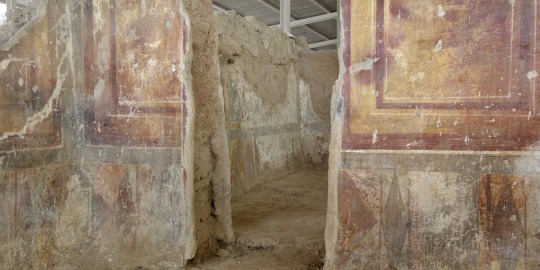


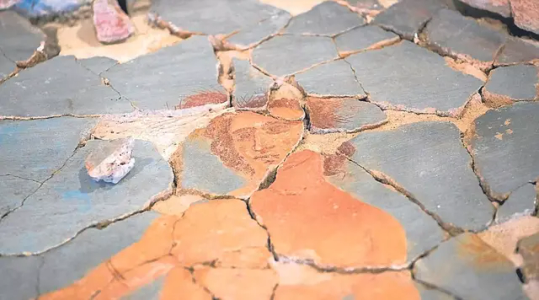
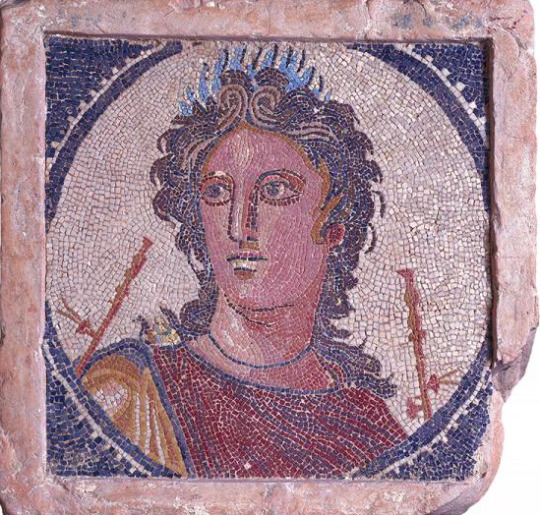



Vil·la romana dels Munts (Els Munts Roman Villa) is one of the best preserved Roman villas in the Iberian peninsula, the Roman province of Hispania. It's located in modern-day Altafulla (Camp de Tarragona, Catalonia), in the countryside near the important Roman city of Tarraco (modern-day Tarragona). The villa's archaeological remains are included in the UNESCO World Heritage Site "Archaeological Ensemble of Tarraco".
The oldest part of the villa dates from the 1st century AD, when it was a small farming villa, but it was soon abandoned. In the early 2nd century AD, the old villa was demolished and the place was rebuilt as a large, aristocratic villa: it still kept having a significant agricultural role, but included a magnificent and luxurious residence area. To get an idea of how luxurious it was, a normal 2nd-century Roman villa might have one marble covering, while Els Munts has hundreds of coverings made of marble imported from the Eastern Mediterranean and the North of Africa. The residence also had wall paintings, mosaic floors, statues, fountains, and artificial ponds. The villa also included a bath house and a the largest temple of the Mithraic religion known in the Western Roman Empire.
When the Roman emperor Hadrian stayed in Tarraco the winter of 122-123 AD, it's thought that this villa could have been the place where he was staying. A statue of Antinous (Hadrian's lover) was found in Els Munts.

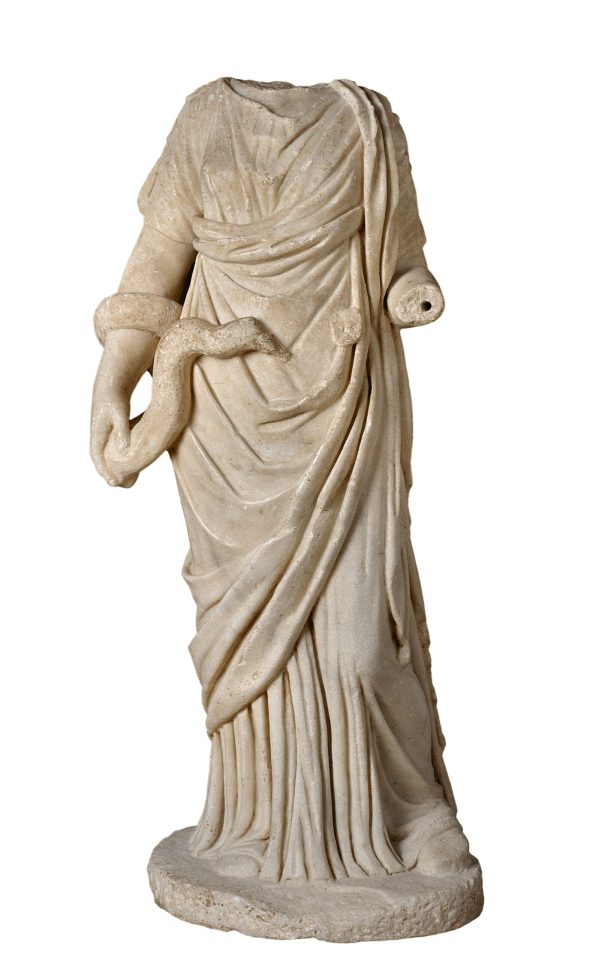

Statue of Antinous, Higea, and Asclepios found in Els Munts. Nowadays in Museu Nacional Arqueològic de Tarragona.
The villa was partially destroyed by a fire in the late 3rd century, starting its decline. In the early 5th century, it was remodelled into a Late Roman villa and then a Visigothic one, and was in use until the 7th century.
Photos by Quim Roser/Dep. Cultura, ArqueoXarxa, Manel Antolí/Tarragona Turisme, Tjerk van der Meulen/Ara, MNAT - Google Arts and Culture. Drawing reconstruction by Hugo Prades/MNAT. Information from Museu Nacional Arqueològic de Tarragona and Ara (Josep Anton Remolà).
#vil·la romana dels munts#arqueologia#història#altafulla#catalunya#arts#archaeology#archeology#ancient rome#ancient roman#antinous#emperor hadrian#ancient#antiquity#roman empire#mosaic#catalonia#europe#travel#travel photography
85 notes
·
View notes
Text
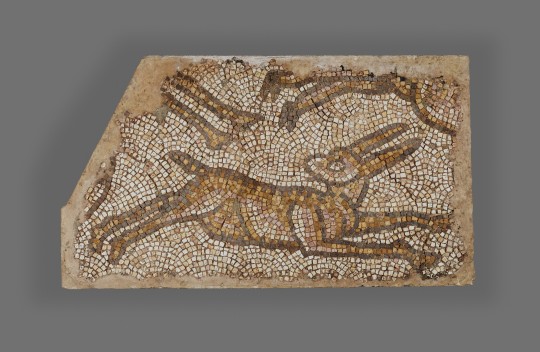
#MosaicMonday for #LunarNewYear #YearOfTheRabbit:
Mosaic Panel with Rabbit
Roman, from Syria, possibly Emesa (present-day Homs)
5th-6th century
Stone tesserae
68.6 cm × 114.3 cm
[Getty Museum 75.AH.118]
#rabbit#rabbits#mammals#mosaic#ancient Rome#Roman art#ancient art#Syria#5th century#6th century#Getty Museum#Mosaic Monday#Lunar New Year#Year of the Rabbit#animals in art
20 notes
·
View notes
Photo
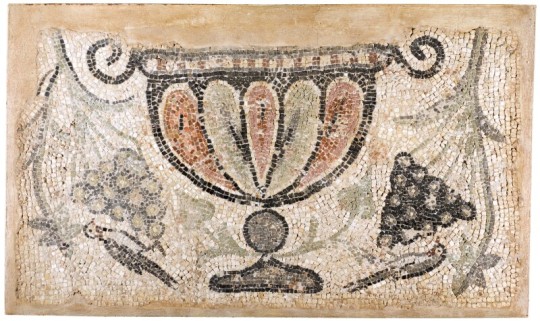
A Byzantine Mosaic Fragment
Circa 5th/6th Century A.D.
Depicting in multi-coloured tesserae a gadrooned vase with voluted handles flanked by hanging vines and two birds each pecking at a cluster of grapes.
78 by 130 cm.
#A Byzantine Mosaic Fragment#Circa 5th/6th Century A.D.#archeology#archeolgst#mosaic#ancient artifacts#ancient art#art#artist#art work#art news#history#history news#ancient history#ancient culture#ancient civilizations
196 notes
·
View notes
Text

Elephants agog in the synagogue
This mosaic of a wide-eyed elephant was discovered by archaeologists in a fifth-century synagogue in Huqoq, Galilee. It is part of a scene where a white-haired Jewish leader confronts a general in Greek garb and his troops, including elephants. There has been a lot of debate about exactly who the two central figures are: was the warrior Alexander? Nero? Are they just symbolic and don't represent any particular incident? To add to the mystery, synagogues from this period rarely depicted non-Biblical events. Jodi Magness, who led the dig that uncovered the mosaic, argued that the elephants show this scene was not Biblical, since elephants do not obviously occur in the Bible (although ivory and some otherwise unidentified big beasts do crop up).
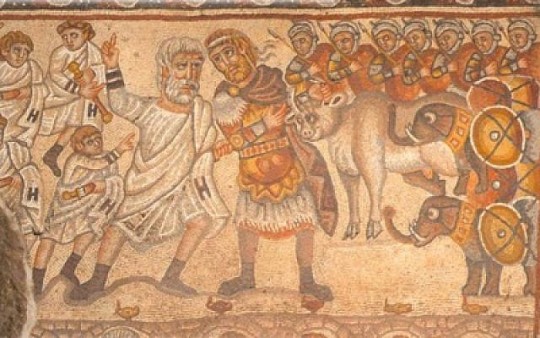
Whatever it depicts, the scene seems to suggest that there was a happy ending and that the war elephants were not deployed!
Material: mosaic
Date: late 4th or early 5th century AD
Origin: Huqoq, Galilee
Image source (x)
107 notes
·
View notes